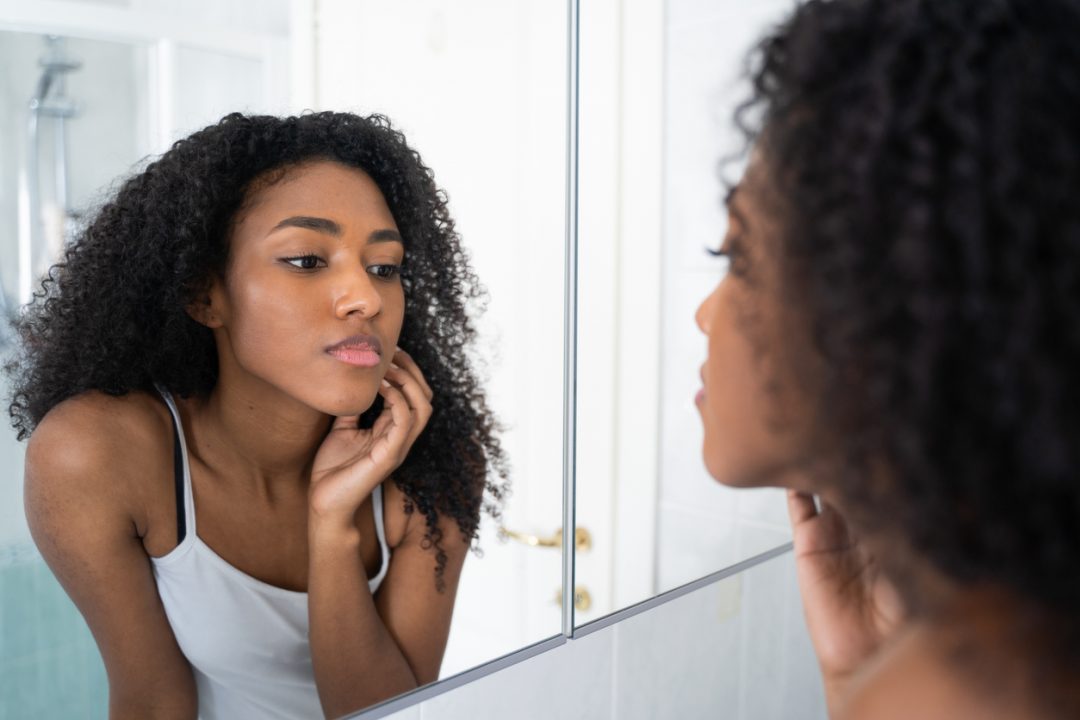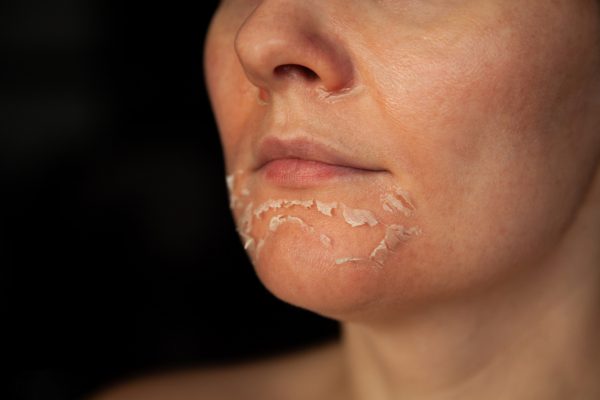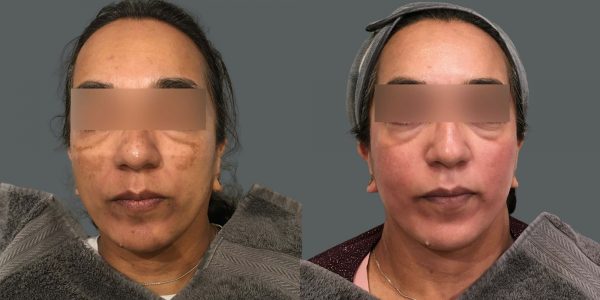

Chemical Peels – probably due to their name – often makes people think of the worst: that they are dangerous. The truth of the matter is, that despite their name, Chemical Peels are widely known for their quick glow-giving abilities and capabilities in effectively treating a range of complex skin concerns, such as pigmentation and acne.
So, here’s what you need to know about them.
Chemical Peels can be formulated from a range of active ingredients, ones tailored to treat a variety of skin conditions. This solution is then brushed across the skin and left on it for a few minutes. It does not take long for the active ingredients to begin working as they have been specifically isolated during the formulation process to restrain the acid from absorbing into the skin. Then they deliver a delayed, but accelerated, absorption – enhancing the activity of the acids.
During a peel, the skin can become tingly which is a sign that the cells are being stimulated and the rejuvenating process is beginning. Your Aesthetician may then apply a neutralising solution to stop any chemical activity – however this is not always needed and depends on the type of peel you chose. Immediately afterwards, you’ll notice an immediate brightening effect on the skin.
In the days following, your skin may be feeling tight or drier than usual – again, this is all part of the process – it is also common for your skin to peel or feel flaky. Usually, the stages of a Chemical Peel will be:
Day 1-2: Settling
Your skin will be more sensitive than usual, so avoid harsh acids and retinols, and do not use harsh scrubs or mechanical exfoliation devices during this time.
You can wear a light moisturiser to help your skin feel more comfortable, this can also help with the next stage…
Day 3-5: Shedding
This stage involves skin peeling and is a great sign that your treatment has successfully helped to grow new, fresher skin cells.
Depending on the depth your peel, usually you can choose between a superficial, medium or deep peel, the shedding of the skin can be very different. For a lighter peel, the skin may only begin to flake in areas where sebum is produced more greatly, such as around the nose. For a heavier peel, the skin can come off in much larger sheets, across larger areas of the face. While it is very tempting to pick or touch the skin during this time, try to resist as this can cause irritation and damage. Just let it happen, or use small scissors to delicately snip loose areas off.

Day 6+: Showcasing
This is when most of the shedding has been completed, you can return to your usual skincare habits, and start reaping in the complements on your skin: otherwise known, as the ‘showcase’ stage.
We offer a range of Enerpeel products because of their emphasis on remodelling, restructuring and rejuvenating. This includes reducing sun and age damage and improving skin conditions such as acne, rosacea, thread veins and pigmentation with minimal downtime.
Enerpeel SA: A salicylic acid peel with anti-bacterial, anti-inflammatory properties to kill 96% of acne bacteria.
Best for: Acne, oiliness, blocked pores, large pores, post-acne inflammation, chest and back acne, inflamed pustules and papules, inflammation and redness.
Expect: A profound cleansing effect, reduction in sebum and softened lines and wrinkles.
Enerpeel TCA: A medium to deep peel that contains trichloroacetic acid to remodel the skin and improve skin tone and texture.
Best for: Rough skin texture, uneven skin tone, scarring, ice pick scars, fine lines and wrinkles, and dark spots.
Expect: New skin cell generation for a smoother and more supple complexion.
Enerpeel JR: A combination of salicylic, resorcinol and lactic acid to target pigmentation.
Best for: Hyperpigmentation, pregnancy mask, actinic keratosis, and melasma.
Expect: Regulated pigment production. Excellent results when used to treat pigmentation resulting from hormonal changes including pregnancy or ageing.
Enerpeel MA: Contains mandelic acid to dissolve dead skin cells and resurface ageing, easily reddened and vascular skin.
Best for: skin redness, spider veins, rosacea, pigmentation and sun damage.
Expect: Reduced redness and a healthy glow restored. Ideal for those at risk of post-inflammatory hyperpigmentation.
Enerpeel PA: Uses pyruvic acid to remodel skin and improve rough skin texture. As an alpha-veto acid, this peel helps to repair acne scars and reduces sebum production to prevent further acne formation.
Best for: Rough skin texture, crepey skin, wrinkles, sun damage, and acne scars.
Expect: Smoother skin texture, encourages cell renewal and collagen production, hydrates skin, and even balances sebum production.
Can Chemical Peels cause acne?
Chemical Peels often helps acne, killing acne-causing bacteria, and encouraging the skin to purge, exfoliating it as well as drying it out which is good for anaeic skin as it is known to be oiler than normal skin types. We recommend a course of Chemical Peels, or adding on a peel to your main treatment. Great combinations can be ClearSkin and a Chemical Peel.
Can Chemical Peels cause pigmentation?
Before undergoing any skin treatment, you’ll always have a consultation. This is how we will be able to assess your skin tone, skin type and outline the best course of treatment for you. When expertly applied by our Practitioners, a Chemical Skin Peel can reduce pigmentation. See the results of this patient tomorrow:

Please note, all consultations are subject to the applicable consultation change or deposit.
To request a consultation, please complete this form.
To request a Blepharoplasty prices, please complete this form.
Our Patient Advisors are contactable via phone Monday to Friday from the hours of 10:00 – 18:00
